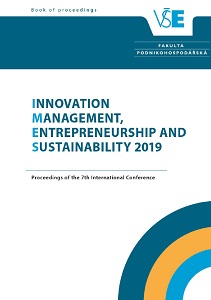The Assessment of Labor Resources Quality
Improvement Models by Entrepreneurs
The Assessment of Labor Resources Quality
Improvement Models by Entrepreneurs
Author(s): Alexandr Kokovikhin, Andrey Yevgenyevich Plakhin, Ekaterina Sergeevna Ogorodnikova
Subject(s): Social Sciences, Economy
Published by: Vysoká škola ekonomická v Praze
Keywords: Subjects of small and medium business; labor resources quality improvement models; performance indicators; public-private partnership
Summary/Abstract: Purpose: This article presents an analysis of entrepreneur satisfaction with the labor resourcesquality improvement models. The results obtained are of great importance, since they willimprove the efficacy of the regional executive bodies of state power in programs for staffingsmall and medium-sized businesses.
Design/methodology/approach: A survey of entrepreneurs on the website of the Ministry ofInvestment and Development of the Sverdlovsk Region, was conducted from November 2017to January 2019. A total of 3420 questionnaires were sent, filled out and returned. The effect ofusing a particular model on the availability of frames is checked on the basis of the models ofpair regression.
Findings: The results of the study allow us to conclude on the greatest impact of public-privatepartnership models while improving the quality of labor resources from the perspective ofproviding entrepreneurial activities. The use of this model will improve the security ofentrepreneurs labor resources.
Research/practical implications: It has been revealed that the most effective model regardinglabor resources quality improvement directed at ensuring entrepreneurial activity is through astate-private partnership dual model. The authors proposed an institutional model fororganizing the dual training of labor resources with the participation of large and smallbusinesses.
Originality/value: The presented study uses a unique data set for the regions of Russia.Approbation of the method is made on the basis of materials obtained in the course of studiesconducted in 2017-2019.
- Page Range: 349-358
- Page Count: 10
- Publication Year: 2019
- Language: English
- Content File-PDF

